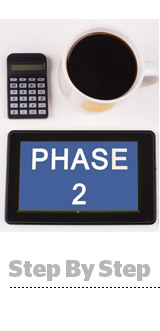
The MRC kicked off the second phase of its three-part Facebook audit at the beginning of August: an assesstment of the quality of Facebook and Instagram viewability metrics as reported by viewability partners like Moat, Integral Ad Science, comScore and DoubleVerify.
Specifically, the MRC is examining if Facebook’s API accurately transmits what’s happening on Facebook to the third-party measurers that process that data and report the metrics.
The MRC wants to see if Facebook maintains the API over time and ensures that it transmits enough data for the third-party measurer to consistently calculate metrics.
Also under the MRC microscope as part of this phase is an appraisal of how the third parties are ingesting the data that comes through the feed from Facebook to make sure they’re properly capturing and processing it.
Auditing the data feed and flow between Facebook and its viewability partners is necessary because Facebook plays by its own rules, as do Google and the other walled gardens.
With most audits, the MRC simply assesses the tags on a digital platform. For the walled gardens, et al., the MRC needs a workaround.
“The audits of large digital platforms are a bit different,” said George Ivie, CEO and executive director of the MRC. “The primary reason for that is because they don’t allow tagging assets to be placed on their pages or in their apps – that’s why we’re auditing the API and the external vendors, so we’re not just relying on Facebook internals to do all this.”
Facebook orignally committed to the audit in February. Google is also going through the process, though its audits are happening concurrently.
The first phase of Facebook’s audit, which is still in progress, is an analysis of its served ad impressions. This phase is technically the resumption of an audit that was previously underway and had been paused at Facebook’s request in mid-2016.
The third phase, if Facebook agrees to it, will audit its viewable video impressions to determine how they stack up against the MRC standard for video of at least 50% of pixels in view for a minimum of two continuous seconds. This phase hasn’t been initiated yet and there’s no formal agreement in place between Facebook and the MRC about when it would begin.
But even once all of the viewability audits are complete, there’s still another wrinkle that needs to be ironed out: deduplication.
Advertisers don’t just want to know if someone saw their ads, they want to do cross-platform measurement, including on Facebook, and they want to know reach and frequency across platforms.
Walled gardens toss up a roadblock in front of that calculation because they’re siloed, Ivie said. If an advertiser runs a campaign on ESPN and Facebook, for example, it’s impossible to know if the person who saw the ad on ESPN’s site is the same person viewing that ad in the Facebook news feed.
To handle that, the MRC is in early talks with the platforms about enabling audience measurement across platforms through products like Nielsen’s Digital Ad Ratings or comScore’s validated Campaign Essentials.
“Advertisers want to know how many times someone saw their ad, if it’s a unique person and how often that person saw it,” Ivie said. “Nielsen and comScore can measure audiences for campaigns with actual demographic characteristics. If they were enabled across the platforms, though, they’d also be able to say which people are additive and unique.”
This post was syndicated from Ad Exchanger.

More Stories
Sex.life’s quickie to 1 million downloads
Draymond Green Addresses His ‘Questionable’ Choices in AT&T Ad
Netflix Announces New Ad Measurement Options Ahead Of The Upfronts